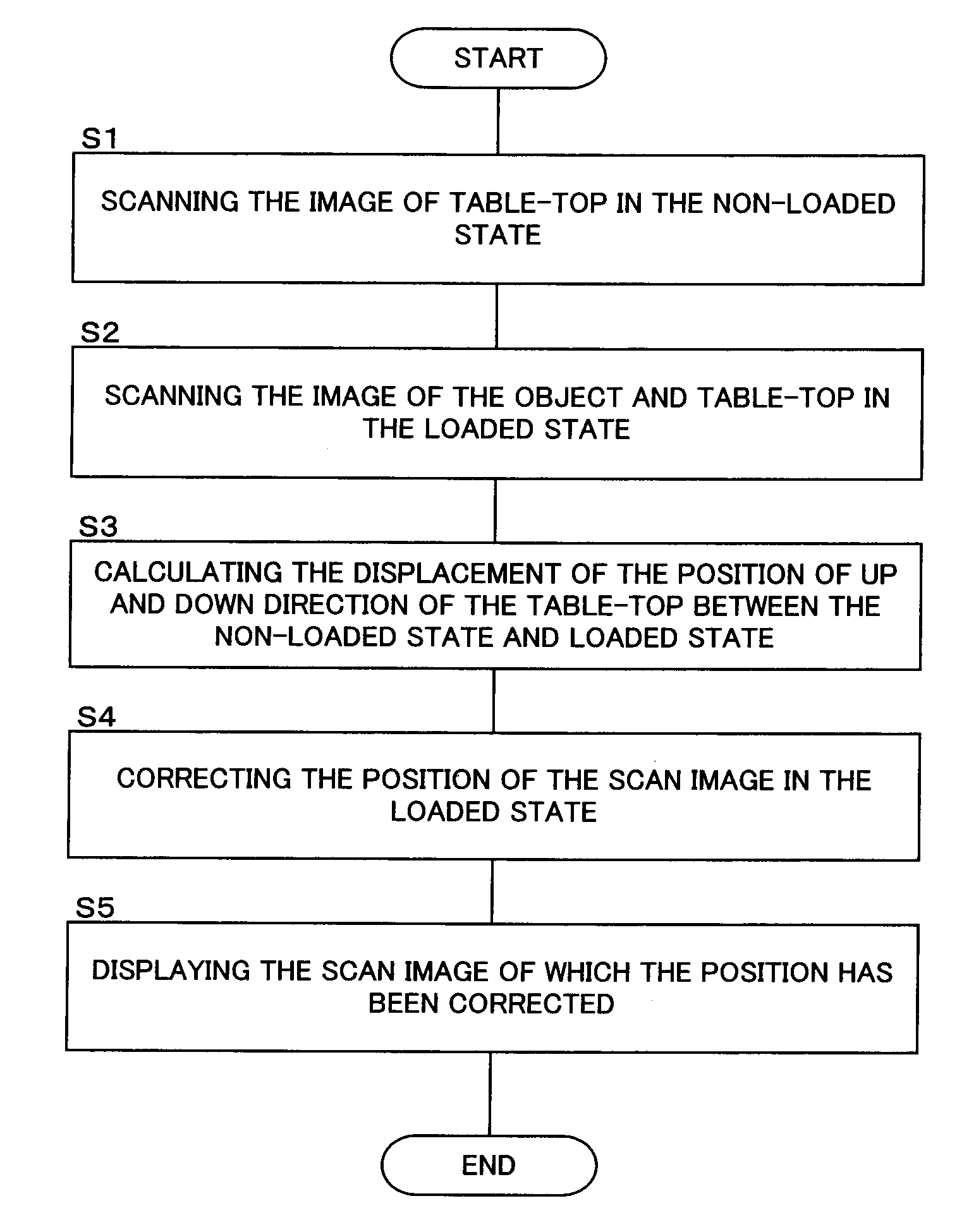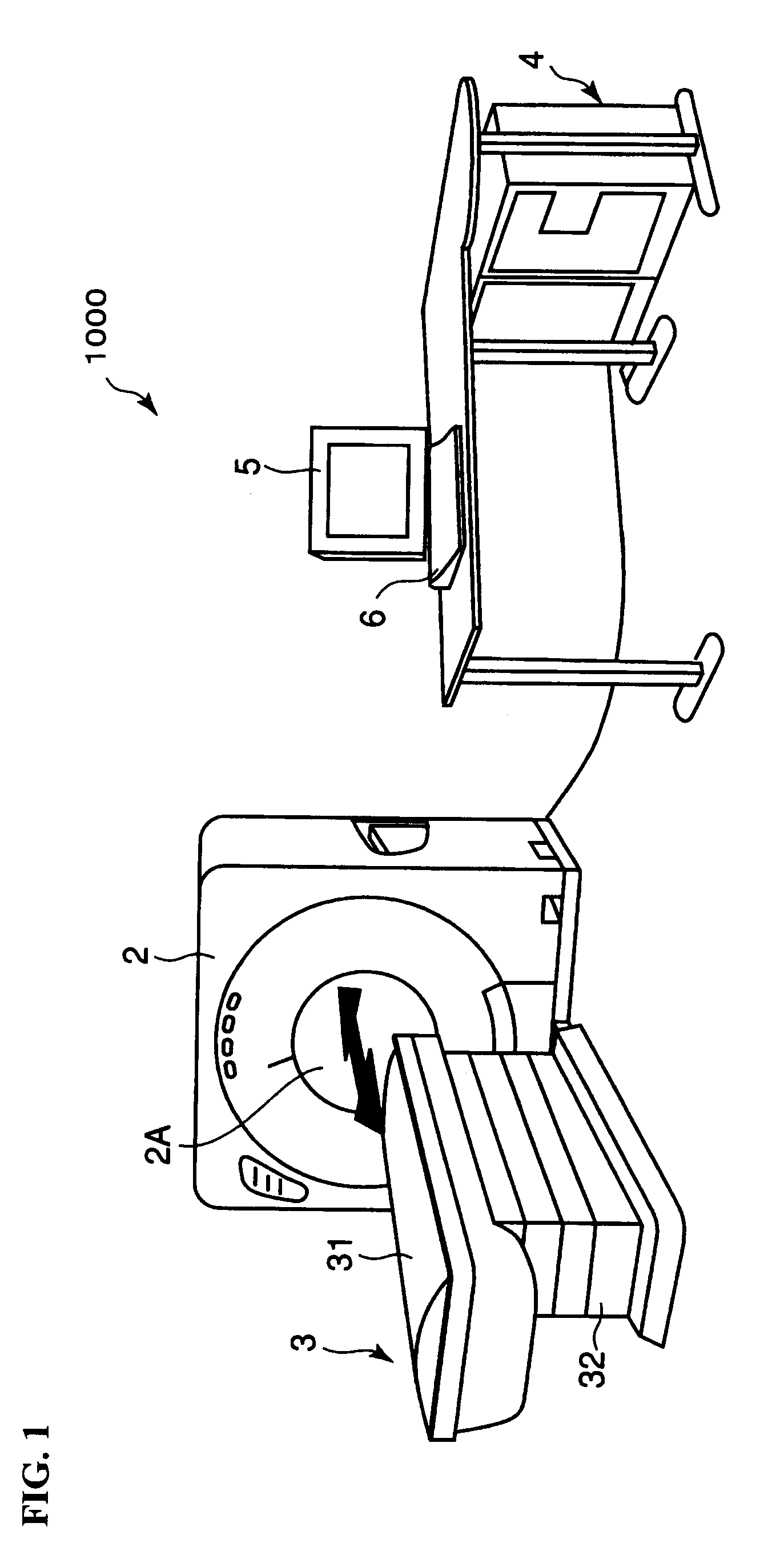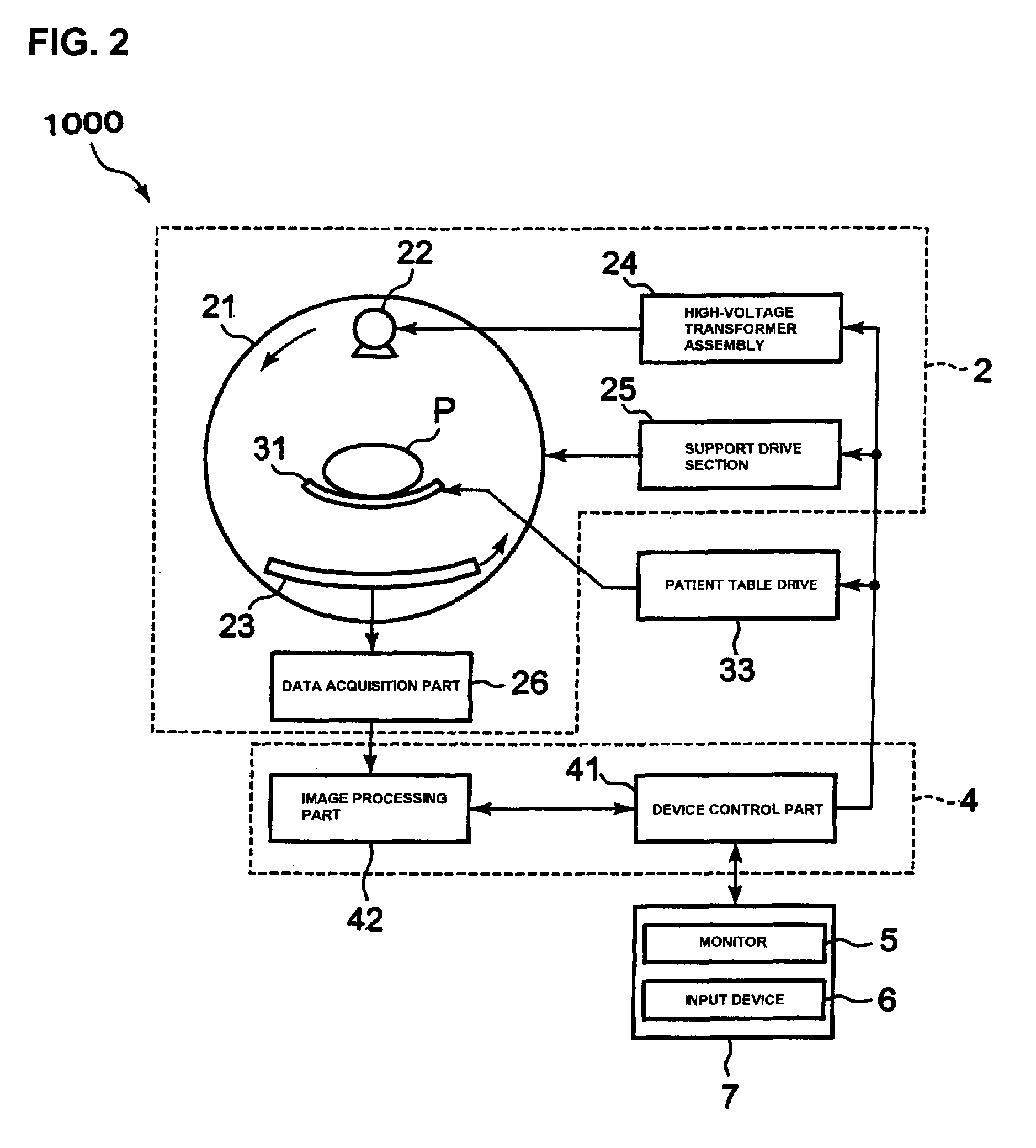Medical image diagnosis apparatus and the control method thereof
a technology of image diagnosis and control method, which is applied in the field of medical image diagnosis apparatus and the control method thereof, can solve the problems of inaccuracy in diagnosis, difficulty in defining the location of the object p with a high degree of accuracy in relation to the location pinpointed from the image, and concern about the deterioration of treatment planning
- Summary
- Abstract
- Description
- Claims
- Application Information
AI Technical Summary
Benefits of technology
Problems solved by technology
Method used
Image
Examples
modified embodiment 1
According to the above mentioned first type of usage, markers 31 (i) are provided at the location for determining the displacement of the patient table 31 (reference position) in vertical direction to indicate the reference position. Instead of providing such markers 31 (i), distinctive positions of the patient table 31 may be set to reference positions to determine the displacement of the patient table 31.
For example, the edge of the patient table 31 near the gantry 2 may be the reference position. In that case, for example, the patient table 31 in the non-loaded state is assumed to be horizontal (in other words, the y-coordinate value of the patient table 31 at any location is assumed to be equal to the y-coordinate value of said edge).
Furthermore, for a tomographic image at any slice location in the loaded state, the y-coordinate value of the image of the patient table 31 in the tomographic image is determined to calculate the displacement of the y-coordinate value and the y-coor...
modified embodiment 2
In the above mentioned first type of usage, the markers 31 (i) are provided at the reference position that determines the displacement of the patient table 31 in vertical direction to determine the displacement of the image position of the patient table 31 in the non-loaded state and the position of the patient table 31 in the loaded state for each reference position, and correct the vertical position of the image of the object P at this reference position.
embodiment 2
This modified embodiment 2 describes a construction that corrects the position of the image of the object P at locations other than prescribed reference position.
In the modified embodiment 2, the displacement calculation part 45, similar to the first type of usage, firstly acquires the location of the tomographic image g (i) of the patient table 31y0 (i) acquired in the non-loaded state and the location of the tomographic image G (i) of the patient table 31y (i) acquired in the loaded state at the reference position indicated by each marker 31 (i). Then, the displacement calculation part 45 calculates the difference of these positions between y0 (i) and y (i) to determine the displacement Δy (i) in up and down direction (y-direction) at said reference position.
Furthermore, the displacement calculation part 45 calculates the displacement Δy (ζ) at any position between the two reference positions (z-coordinate value=ζ) based on the displacement Δy (i), Δy (i+1), which are calculated f...
PUM
 Login to View More
Login to View More Abstract
Description
Claims
Application Information
 Login to View More
Login to View More - R&D
- Intellectual Property
- Life Sciences
- Materials
- Tech Scout
- Unparalleled Data Quality
- Higher Quality Content
- 60% Fewer Hallucinations
Browse by: Latest US Patents, China's latest patents, Technical Efficacy Thesaurus, Application Domain, Technology Topic, Popular Technical Reports.
© 2025 PatSnap. All rights reserved.Legal|Privacy policy|Modern Slavery Act Transparency Statement|Sitemap|About US| Contact US: help@patsnap.com



